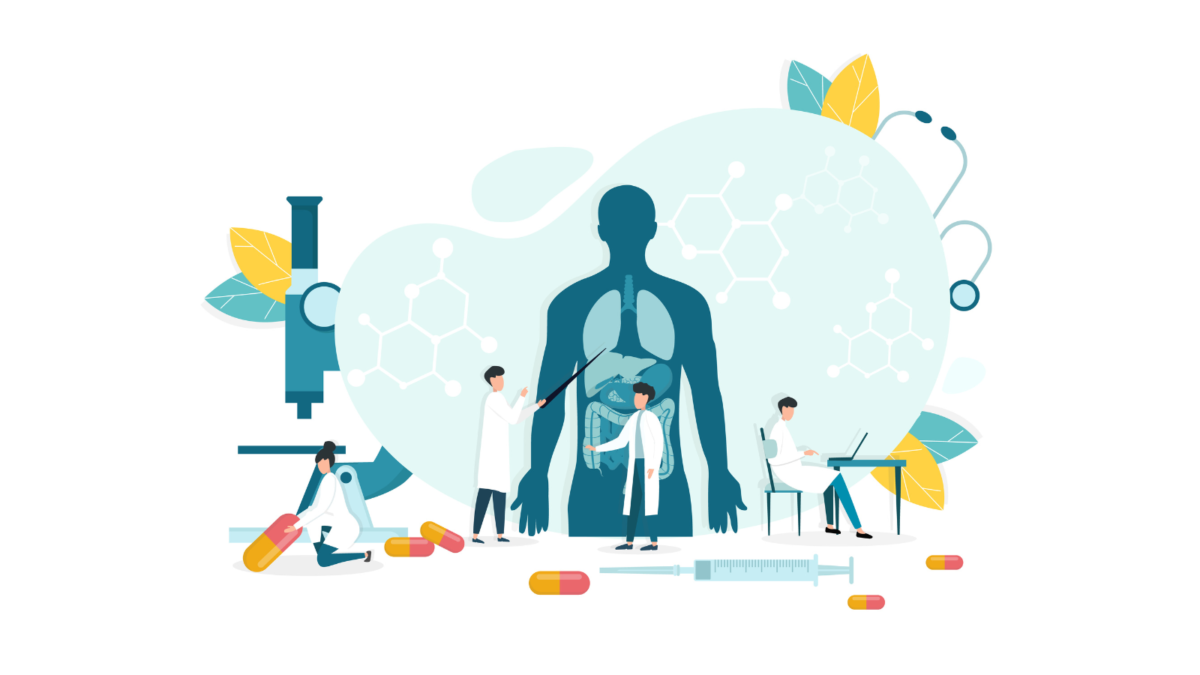Despite lung cancer being the leading cause of cancer deaths in the U.S., there are many myths associated with the disease that can lead to later diagnosis. We know that when cancer is detected early, it increases your chance of survival. You may also require less extensive treatment or have more treatment options. We’re debunking the top five myths about lung cancer, so you have the information you need to give yourself—and your loved ones—better outcomes:
Myth #1: You can only get lung cancer if you smoke or use tobacco.
Perhaps the biggest myth surrounding lung cancer is that smoking is the only cause of lung cancer. People who have never smoked can also be diagnosed with the disease—10-20% of lung cancers are found in non-smokers, according to the Centers for Disease Control and Prevention (CDC). You may be at increased risk for lung cancer if you have had heavy exposure to secondhand smoke, were exposed to indoor or outdoor air pollution, have had a job with exposure to radiation, were exposed to toxic substances (such as arsenic, radon or asbestos) or have a personal or family history of lung cancer.
Myth #2: I’m a smoker but it’s too late—there’s no point in quitting now.
While many factors can contribute to lung cancer risk, about 80%–90% of lung cancer deaths are related to cigarette smoking. Quitting smoking has near-immediate benefits and reduces your risk of getting cancer or other smoking-related diseases. According to a study published in Annals of Internal Medicine, quitting smoking even after a lung cancer diagnosis can help people live longer or delay a cancer recurrence or worsening of the disease. In other words, it’s never too late to quit. For help quitting, call 1-800-QUIT-NOW.
Myth #3: A lung cancer screening happens when a health care provider holds a stethoscope to your chest and listens to your breathing.
There is a lot of confusion around what screening for lung cancer looks like. Lung cancer screening is done through a specialized computed X-ray, also known as a CT scan, to detect cancerous growths inside a person’s lungs. This is formally referred to as a low-dose computerized tomography (LDCT) scan and is a non-invasive and quick procedure. When your doctor checks your breathing with a stethoscope, they are listening for wheezing or fluid in the lungs—but they can’t detect lung cancer that way.
There is definitive evidence that screening long-time smokers with LDCT significantly reduces lung cancer deaths, but screening rates are low with less than 5% of eligible Americans being screened annually. In 2021, the U.S. Preventive Services Task Force (USPSTF) lowered the eligible screening age and smoking criteria, effectively expanding screening access to millions more smokers and former smokers.
If you’re a heavy smoker or a former heavy smoker, get screened for lung cancer. The U.S. Preventive Services Task Force recommends lung cancer screening for current or former smokers who are ages 50–80, who have 20 pack year histories* of smoking and who either still smoke or have quit within the past 15 years.
Myth #4: Lung cancer occurs only in older people.
While lung cancer mainly occurs in older people, it can also affect young people. Adenocarcinoma, the most common type of lung cancer overall, is the main type of lung cancer affecting adults under the age of 46.1 In the early stages, there may be no symptoms, but it’s important to notice any changes to your body and see a health care provider if these symptoms occur:
- A cough that does not go away
- Coughing up blood
- Constant chest pain
- Repeated pneumonia or bronchitis
- Weight loss and loss of appetite
- Hoarseness lasting a long time
- Wheezing or shortness of breath
- Feeling very tired all the time
Myth #5: Aside from not smoking, there’s nothing I can do to reduce my risk of lung cancer.
There are many steps you can take to reduce your risk of lung cancer. Stay away from secondhand smoke, eat lots of fruits and vegetables and don’t rely on supplements (beta-carotene supplements may increase risk of lung cancer). It’s also important to make your home and community smoke-free and to check the radon levels in your home.
Exposure to radon is the number two cause of lung cancer. It’s an odorless, radioactive gas that can enter homes and buildings through the ground. Very few people know how to test their homes for radon; in fact, many people learn what radon is only after they have been diagnosed with lung cancer. Learn how to test your home for radon and take proactive steps to protect yourself and your loved ones.
The fact of the matter is anyone with lungs can get lung cancer. That’s why it’s important to be on the lookout for any signs of the disease and alert your health care provider about any symptoms, even if you don’t have any of the typical risk factors for the disease. Not smoking (or quitting if you do smoke), avoiding secondhand smoke, testing your home and workplace for radon, reducing radiation exposure and getting screened regularly if at high risk are all ways to reduce your risk of developing lung cancer.
Learn more about lung cancer and ways to reduce your risk.
*A ‘pack-year history’ is an estimate of how much a person has smoked over time. The number of packs of cigarettes smoked every day is multiplied by the number of years a person has smoked that amount. Example: a person who smoked 1 pack a day for 20 years has a history of 1 x 20 = 20 pack years.
1De Groot PM, Wu CC, Carter BW, Munden RF. The epidemiology of lung cancer. Transl Lung Cancer Res. 2018;7(3):220-33. doi:10.21037/tlcr.2018.05.06

No Comments